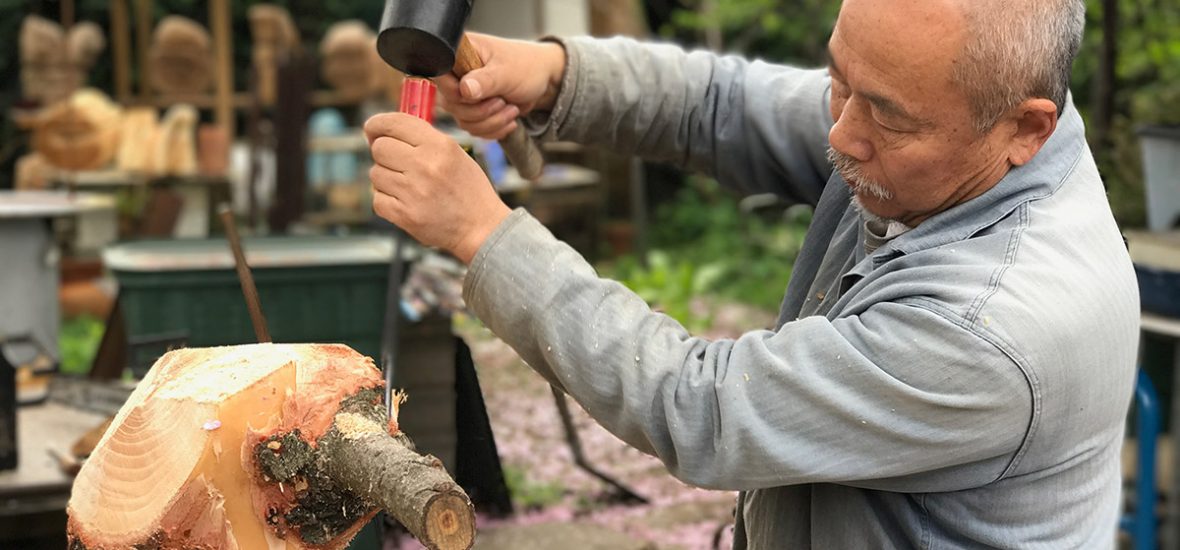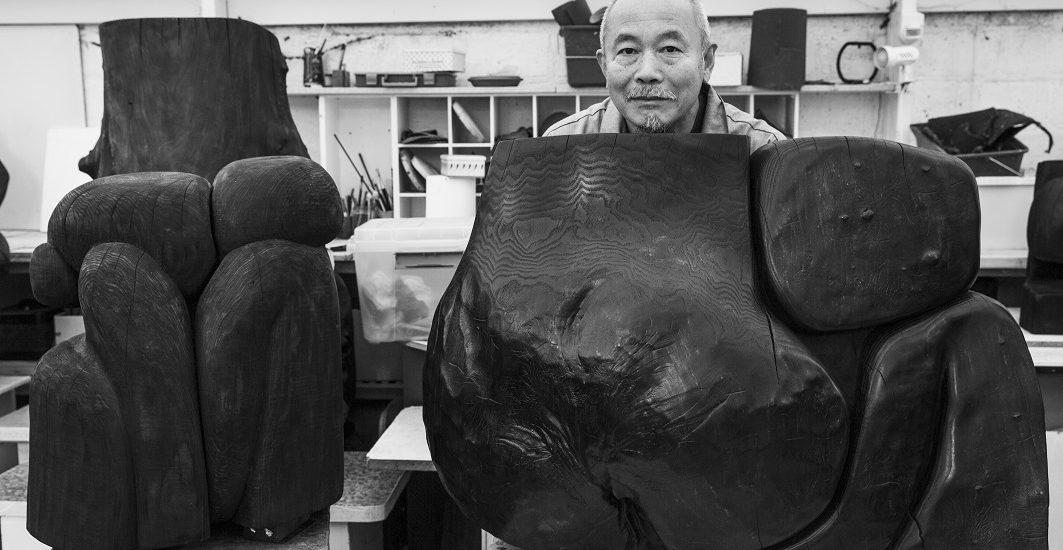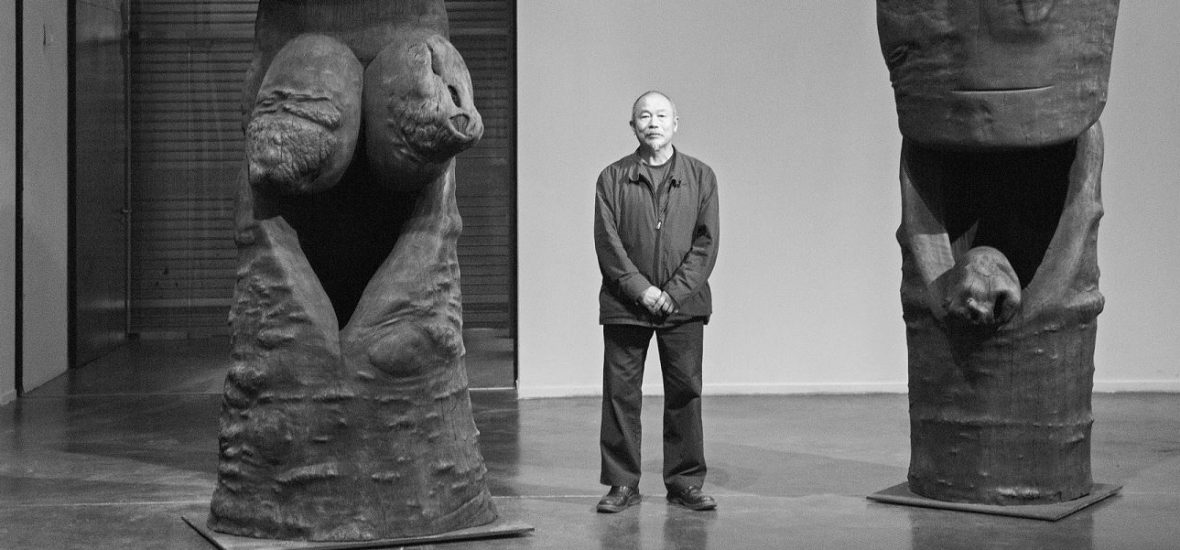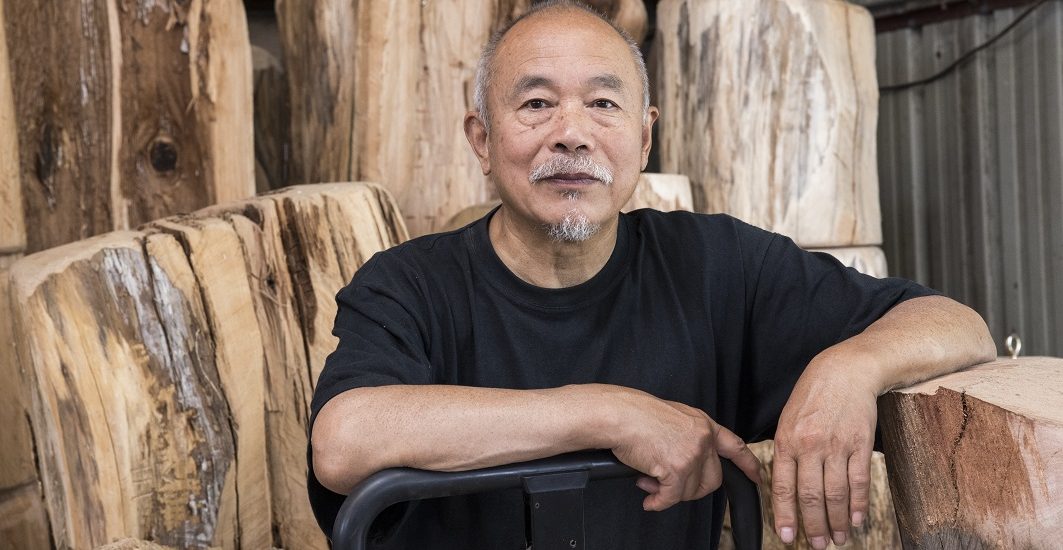
- Direct wood carving performances using felled tree trunks selected from the Chambord woodlands from 9 to 15 October and 28 to 30 October
- Exhibition from 15 October 2023 – 17 March 2024
- Press opening Thursday 12 October 2023

Chambord has embodied a true utopia ever since it was built, a brilliant work of art that still has secrets to reveal. Since 2011, the Domaine national de Chambord has become a creative laboratory hosting residencies for artists and writers. The château and the grounds are vivified by groundbreaking exhibitions, and the spirit of the place is imparted to the artworks via the creative imagination, thereby setting up a meaningful dialogue between the art and the site.
At Chambord from 15 October, Wang Keping will show nineteen mainly large-scale sculptures, variations on the theme of the couple, very present in his work. Inspired by the duality of the great staircase at the centre of the château, Wang Keping will give his own vision of the duo, of twinship, of human duality.


“Great works of architecture are unique and unrivalled. They have in common a sense of beauty, a special charm, their humanity. At the heart of the Château de Chambord is the two-directional spiral staircase, a unique creation from Leonardo da Vinci’s imagination epitomizing the soul of the Renaissance.
Like the Mona Lisa, the double-twist staircase generates wonderful, never-ending reveries within us. Yet when an artist is to show his work at the foot of such a giant, he face the challenge of finding a way to resonate with his master’s chef-d’oeuvre.
I feel privileged and honoured to be invited to show my work here, but I also found it hard to choose pieces from my own work. The double-helix staircase kept turning in my mind. And then, one night, it became clear to me: I envisioned the two forms turning and entwining like a couple’s two bodies in a close embrace, just as the beauty of architecture and human nature harmoniously blend into one another. Beauty gives rise to feelings of love, and love is the essence of civilization.
Divine coincidence! For years, Couples were what I had been creating. They had been waiting for such a moment of pleasure! Some of them were invited to attend. What luck – now they would be able to meet at a ball in a royal château, each couple dancing day into night, and night into day alongside the great master’s chef-d’oeuvre, to the melodious sounds of the Renaissance.”
Wang Keping

Wang Keping is heir to the long tradition of direct carving, using single-block tree trunks, with no assemblage. This technique is now quite rare, and Wang Keping is one of the few remaining virtuosos, enabling him to work with an unusually wide range of woods from many species of trees.
His sculptures show strains of primitive art, Chinese traditional sculpture and also the work of Brancusi, but it is the sensuality of wood that his work conveys above all, an erotic dimension that from the carved, burned and polished surface forms a skin, an object of desire. In formal terms, his vocabulary prefers generous, ample shapes inherently expressing the material’s generative force.

Born in 1949 near Beijing, Wang Keping is one of the greatest Chinese living artists. Though he was attracted for a while by theatre as a young man, he turned to sculpture in the late 1970s, becoming a member of the “Xingxing / 星星” group which burst on to the international art scene in 1979 marking the de facto creation of the first avant-garde art movement to come out of the People’s Republic of China.
He became a standard bearer for young freedom-loving artists, and his sculpture, titled Silence, emblematic of opposition to censorship, made the headlines of the New York Times a few days after an exhibition was banned by the authorities. Married to a teacher of French nationality, Wang Keping waited for over three years before being allowed to travel to Paris in 1984. Two years later he began working with the Galerie Zürcher, a collaboration which lasted thirty years.
In the 1990s, a number of his monumental sculptures were installed in France, the USA and in Germany, but it was with Spectateurs, made for the «Champs Elysées de la Sculpture» in 2000, that his career really took off. Large-scale group shows followed this event, culminating in a solo exhibition in 2009 at the Shenzhen museum, which presented nearly three decades of his work. Over the following
years, several museums in France held exhibitions of his work: Zadkine (2010), Cernuschi (2011), Chaumont-sur-Loire (2016 and 2020), Rodin and Guimet (2022), while a first retrospective was given in Beijing at the UCCA Centre for Contemporary Art in 2013; one of his works was purchased by the Musée National d’Art Moderne. Wang Keping has been represented by the Galerie Nathalie Obadia in Paris and Brussels since 2017.
